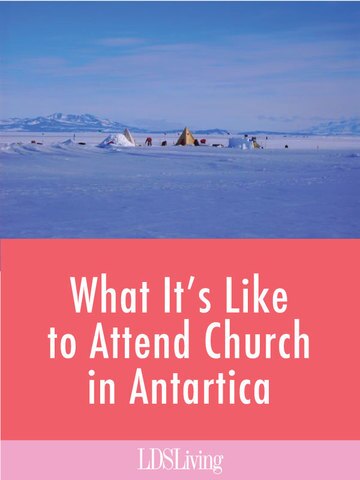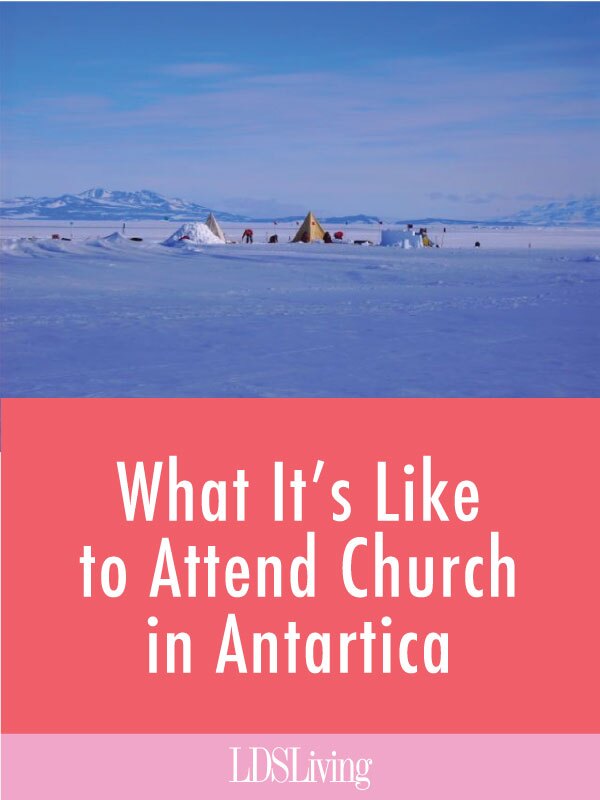
January is summertime at the South Pole, which means that the sun never sets and the air is 30 degrees Fahrenheit (or about 0 degrees Celsius) at the most. The wind howls incessantly, providing the only natural sounds in the Antarctic interior. There are no animals, plants, or smells—just white snow and ice and the occasional grey patch of earth under a blue sky.
Despite this hostile environment, Antarctica is actually teeming with life. You just have to look. McMurdo Station, Antarctica, is home to near 1,000 people—about 100 scientists and support personnel—taking advantage of the “warm” weather, when they can study the beautiful simplicity of Antarctica’s delicate ecosystem. And where there are scientists, there are social gatherings, new friendships, and shared philosophies.
Antarctica has no permanent population. Scientists come and go, but very few live on the McMurdo science research base for more than a few months. Each Antarctic summer is a reunion of coworkers and old friends who come from all over the world to share in adventure and discovery.
And occasionally in the community you can find a Mormon or two.
Life of an Antarctican
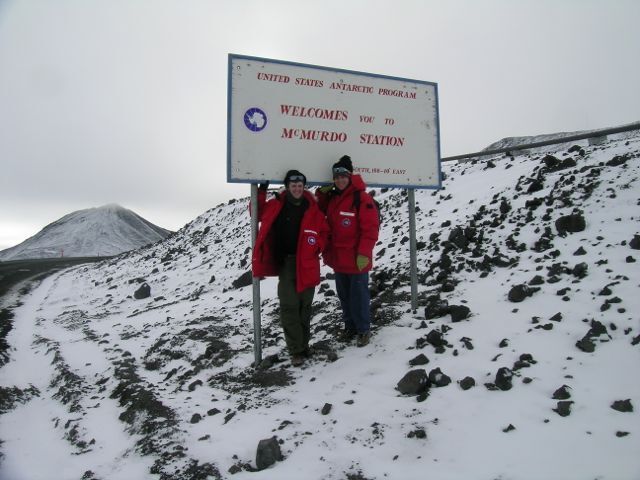
Photo courtesy of Adler Dillman
Latter-day Saint Dr. Byron Adams is a professor of biology at Brigham Young University. He makes a month-long trip to Antarctica every year with the McMurdo Long-Term Ecological Research program to study the very fragile ecosystem that holds Antarctica together. He specializes in soil ecology research.
He stays in Antarctica for several weeks, but not always in McMurdo. Most of the time, he flies by helicopter to the dry valleys west of McMurdo where he lives in tents with a small handful of coworkers and students. These valleys are one of the few places in Antarctica that is free of snow during the summer months, so they spend all day experimenting with and observing microorganisms in the soil, sometimes taking breaks to admire the glacial ice around them and the way it seems to change color and shape as the sun circles overhead.
But Adams and his team also spend some of their time in “Mac Town,” the McMurdo research station that has taken on a life of its own. The town has everything the researchers could need for physical and mental wellbeing—a large dining hall, dormitories, a hospital, a warehouse full of gear, and a single chapel appropriately named the Chapel of the Snows.
The Chapel of the Snows
While the bars and halls may seem to be the center of the community, the Chapel of the Snows holds a special prominence in the hearts of the people. The place of worship wasn’t even in the plans when the McMurdo base was under construction. But while volunteers were working on other buildings, they began collecting extra lumber and supplies to construct the church in their spare time. Before the rest of the base was finished, there stood a neat little chapel on a knoll overlooking the camp. It even had a bell taken from a gasoline tanker, and by 1978 there was an organ, too.
This small chapel is now shared between Catholics, Protestants, Alcoholics Anonymous members , yoga instructors , and yes, Mormons.
When chapel time was being divvied among the different sects, an LDS member of the National Science Foundation quickly claimed a time slot on Sundays for Mormons to meet.
“Down there,” says Adams, “space for recreation or worship is at a premium. There’s just not enough warm heated space to do stuff in.” So the fact that Mormons have a big enough presence to claim a regular time every Sunday in the chapel is a big deal.
“Everyone on station knows about us. They know who we are because they put signs everywhere that say when the different denominations can meet in the chapel.” People are often surprised to see Mormons on the list. They wonder if there are ever enough Mormons on the base to hold a meeting.
For the most part, there aren’t. But whenever Dr. Adams and his LDS friends find themselves in Mac Town on a Sunday, they take advantage of the opportunity to dedicate their time to the Lord.
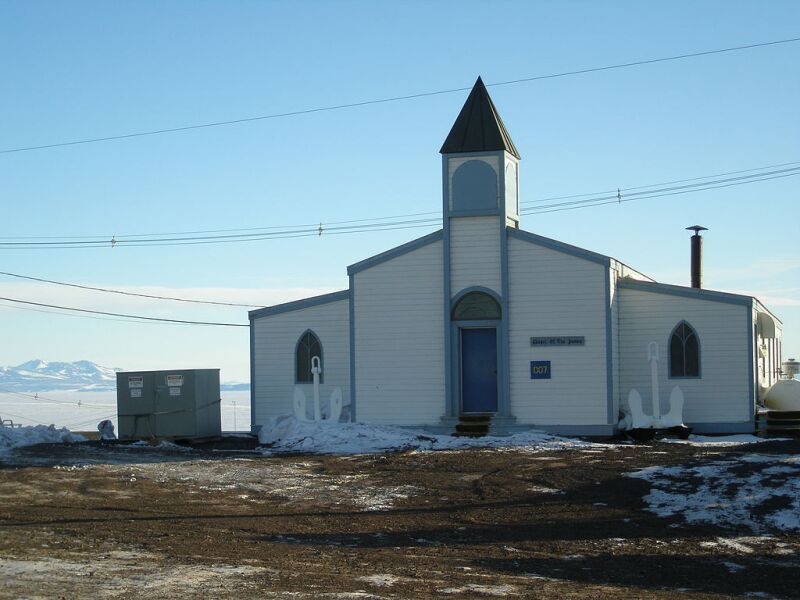
The appropriately named Chapel of the Snows, courtesy of Alan Light
A Gathering of Saints
There is no permanent branch in McMurdo. The base has a regular Catholic priest and a Protestant chaplain who comes along with the Air Force, but the few LDS scientists just have to do the best they can on their own. They borrow sacrament trays and cups from the Catholics. A cupboard space in the chapel was allocated to LDS Church materials—hymnals, scriptures, copies of the sacrament prayers, and old copies of Church magazines.
Attendance is small. Sometimes, Dr. Adams is the only LDS member on base. Other times he’ll have a student or two with him. Occasionally LDS visitors from the National Science Foundation or flight crews for the Air Force will arrive on Sunday mornings to participate.
The meetings are generally brief. The LDS time slot for the chapel is only for an hour and a half, but they use that time to the fullest. They hold a Sacrament service with permission from Dr. Adams’s home bishop, sing hymns, share their testimonies, and (if there are enough people) prepare talks.
“You know,” says Adams, “it’s kind of cool sitting there just with yourself or one other person, singing a hymn and sharing a thought from the scriptures. It’s typically very, very personal.”
Dr. Adler Dillman and Dr. John Chaston, fellow professors and members of the Church, have attended services with Dr. Adams in Antarctica and agree that the church meetings there are one of a kind.
“While of course our relationship with Heavenly Father and Jesus Christ transcends geographic and cultural boundaries,” Dr. Dillman says, “it was nice to ‘gather together as followers’ even in such a removed place.”
Dr. Chaston agrees: “We each spoke really openly about our thoughts and feelings about the gospel. Because the organization was less formal, it was natural to be open.”
Standing as Witnesses of God in All Places
Despite their small numbers, members of the Church definitely catch the attention of the McMurdo base. McMurdo is the largest community in Antarctica, yet it only has about 1,000 people living there in the summer. This number plunges down to 150 or so in the winter. Everyone interacts closely with one another, and everyone knows when there’s a Mormon in town.
When asked if Dr. Adams ever gets to talk about the Church, he replies, “All the time! Everybody wants to know, ‘Dude, what’s the deal? You really believe all that stuff? I’ve just got to know, are you really down with that?’” In a base almost entirely populated by scientists, an LDS lifestyle can seem paradoxical to some.
But Dr. Adams is always happy to tell his peers what he believes and why. These discussions often happen at one of McMurdo’s three bars, where people gather to socialize and meet up with friends after a long day of work. When Dr. Adams opts for a soda instead of alcohol, it opens up a dialogue for him to share his beliefs. He’s had countless chats with curious friends, coworkers, and strangers.
Dr. Dillman shares, “Dr. Adams and I had the chance to talk about the Church with the other members of our ecology team, especially since we were attending the Chapel of the Snows on Sundays. Because we had so little time to be there, we usually worked from early in the morning until late into the evening, often leaving the lab at one or two in the morning. So I think it was somewhat noticeable that we took time out to go to church.”
Dr. Chaston adds, “As you might expect, when you have a lot of people in tight quarters, there are lots of opportunities to talk about lots of things. The most memorable experience was speaking with someone who was also a faithful disciple of Christ. We spoke about the Spirit and how even though some may discount the feelings of the Spirit, once you’ve felt it, you know you’ve felt it and you know it’s real. It was a sweet experience for both of us to share that.”
United by Faith
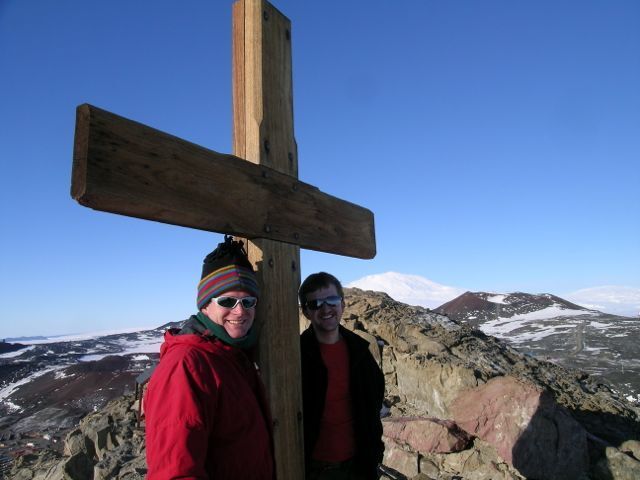
Photo courtesy of Adler Dillman
In general, Dr. Adams says that he and his fellow Mormons are well received by everyone on the base. The community is civil and unified, and open discussions are encouraged. There is a religious air overshadowing the whole station, due in part to a large cross that stands atop a nearby hill.
The cross was placed there in memory of those who sought the South Pole and never returned. On it are inscribed the immortal words of Alfred Lord Tennyson: “To seek, to strive, to find, and not to yield.” One can see the hill and cross from nearly anywhere at McMurdo Station.
Dr. Dillman says, “It reminded me of the certainty of death as well as the surety of resurrection through our Lord. For me, that affected the atmosphere and feeling of my entire stay at McMurdo Station.”
The Protestant chaplain on base attends the LDS meetings on occasion. Seeing that the group is small, he joins to sing a hymn and introduce himself to the visitors.
Sometimes, people of other faiths will come to the chapel during the LDS-allotted time just out of curiosity.
Since summertime and Christmastime coincide in Antarctica, many scientists find themselves down south around the holidays. It brings Christians of all denominations together. Dr. Adams shares, “One guy showed up [to the chapel] and said, ‘Look, I’m not interested in your religion but I love to sing Christmas songs, and I know you guys sing Christmas hymns, so let’s do it!’ We sang a lot of songs and spread some cheer and hopefully sowed some seeds. It really is a very unique place on the planet in terms of the types of people that are there and the types of interactions that are fostered by that environment.”
How Great Thou Art
Even when Dr. Adams is away from Mac Town, he finds it easy to feel the Spirit and a closeness to God, despite an environment that most people would label “god-forsaken.”
“It’s an amazing place. I find tremendous beauty in the solitude.”
The majority of Antarctica is covered by a sheet of ice that can be up to two miles thick. On the coasts you can find seals, penguins, and whales, but in the dry valleys near McMurdo, Dr. Adams only sees life on a microscopic level. Seeing how important even the tiniest of God’s creatures are to the big picture is a profound experience.
“I’m studying life on the very limits of existence,” Dr. Adams marvels. “The organisms and ecosystems that I study are very delicate, very intricate, and very beautiful. It’s an amazing thing to see in such a simple and starkly beautiful place. The sense of wonder you can get in a place like that is unique.”
Observing microorganisms sometimes makes Dr. Adams feel microscopic himself. “I’ll have a tent set up next to a glacier and know that the water that’s melting out of it is 50 thousand years old or older. In some ways you can feel very small. You have a feeling of the immensity of time that’s passed by.”
The glaciers helped Dr. Dillman feel a temporal closeness with the Savior. “It was a feeling I had not experienced before but that might be familiar to those who have traveled to Jerusalem to walk those streets,” he says. “I remember spending a night at Lake Hoare and eating dinner with some geologists and glaciologists that had already been there for weeks. One of them mentioned that we were drinking ‘Jesus water.’
“When I asked him about it, he told me that it was melted glacier ice from the glacier next to camp. He suggested that this glacier was around 2,000 years old and that the water we were drinking had been on earth at the same time as Christ. As I sat in my tent later that night, drinking the glacier water, I couldn’t help but reflect on the life and mission of the Savior. It was a sweet experience that has not left me.”
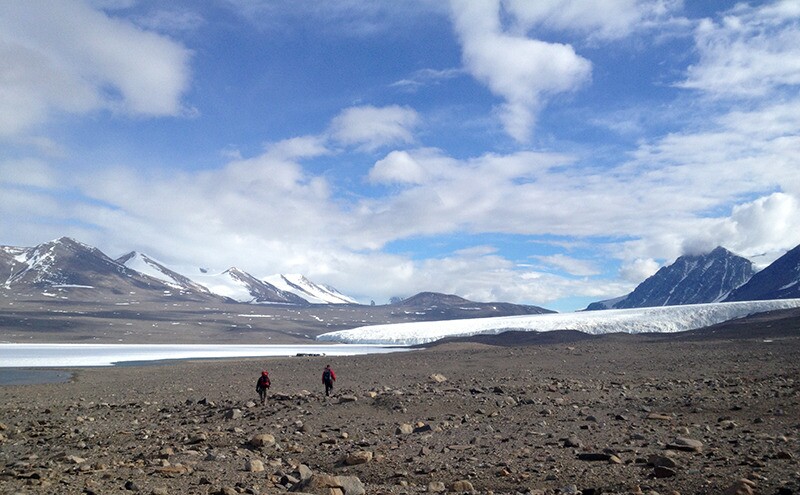
Photo courtesy of Byron Adams
Dr. Dillman says that wonderment was the greatest gift he received from studying in Antarctica: “I remember feeling a renewed sense of awe at the beauty of the earth. My relationship with Heavenly Father and Jesus Christ transcends geographic and cultural boundaries and can even be enhanced when familiar surroundings and activities are removed.”
Though their numbers are small and their time there is brief, those members of the Church who find themselves in Antarctica leave with a renewed appreciation for God’s creations and man’s role on earth. Their presence affects others in McMurdo, and when they leave, it is with renewed determination to share what they’ve learned and felt—that Jesus Christ is the Lord and Savior of all the ends of the earth, even Antarctica.
